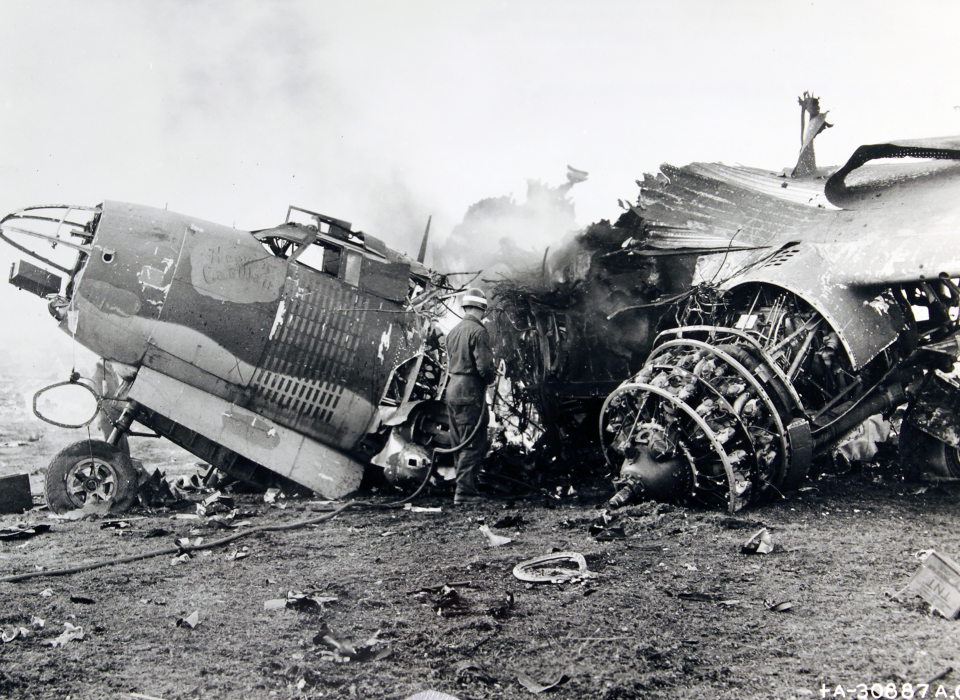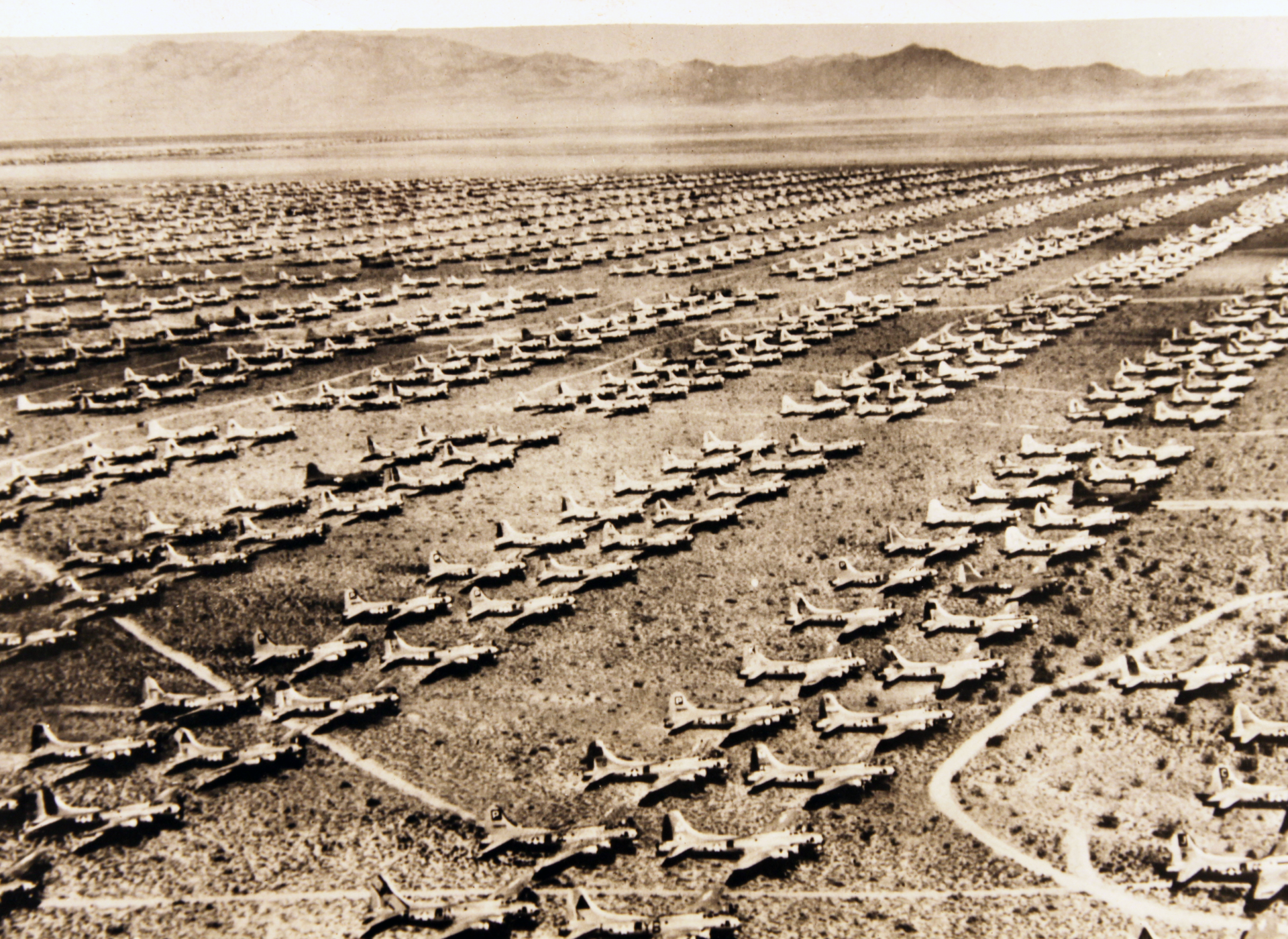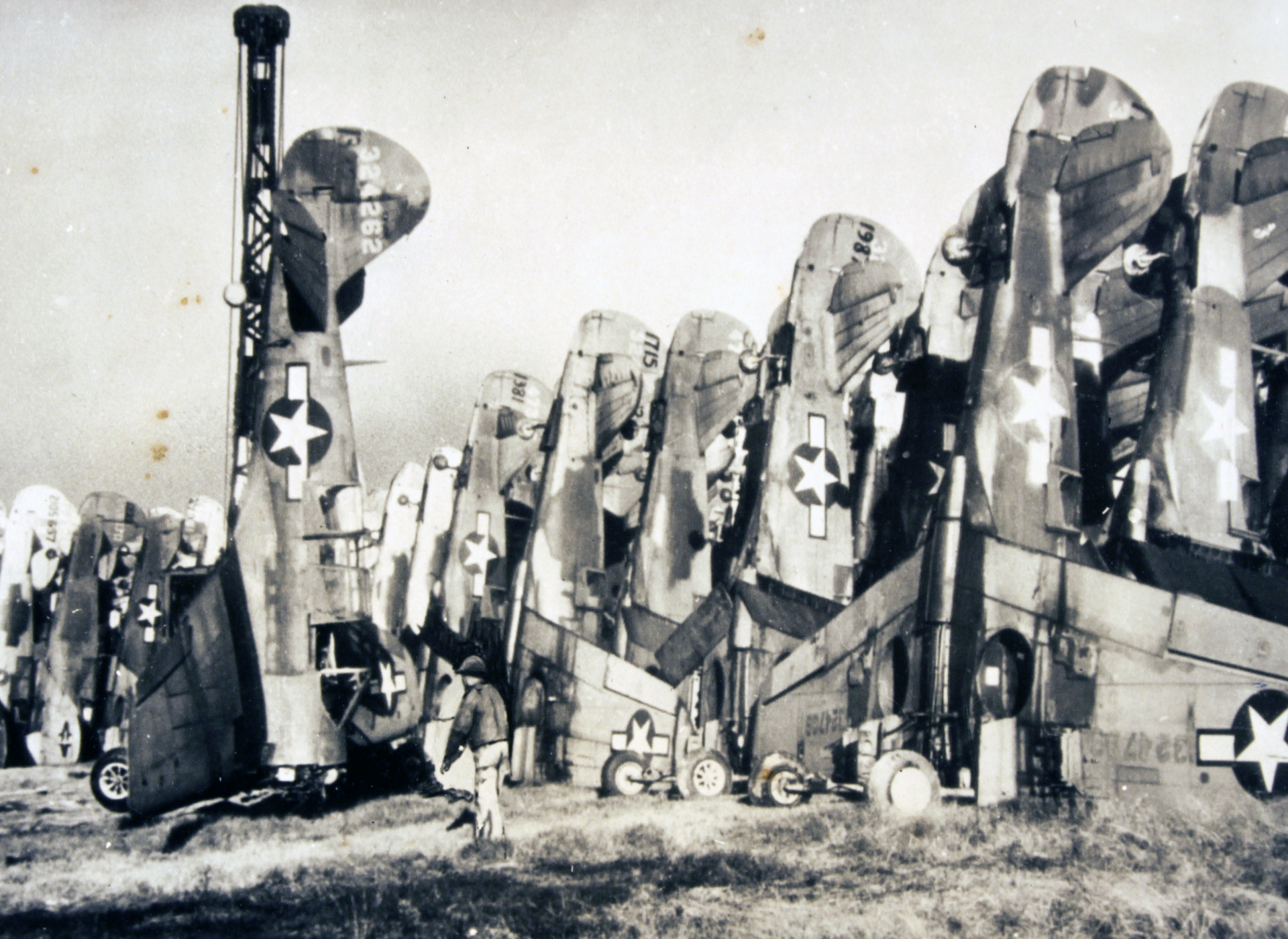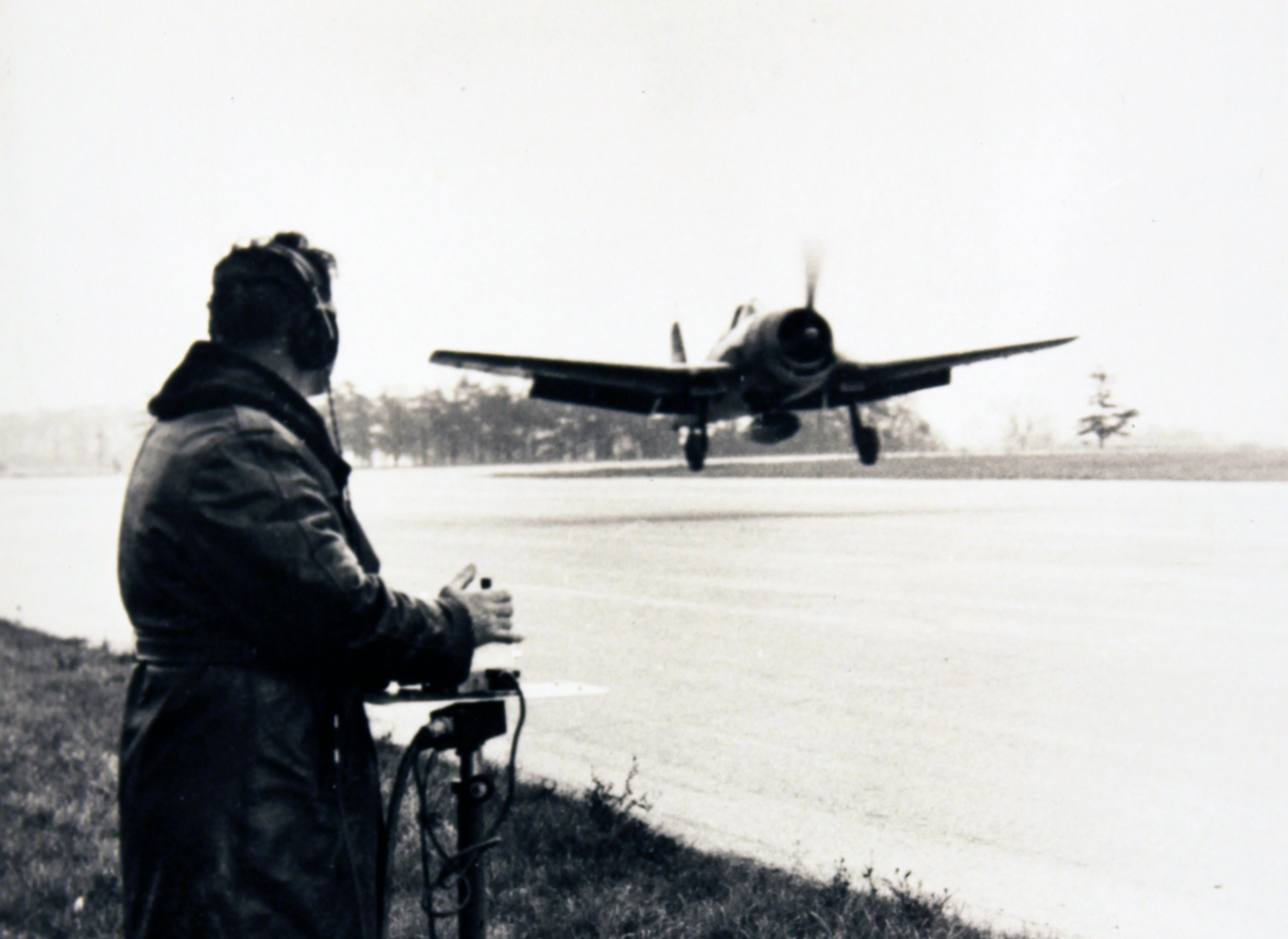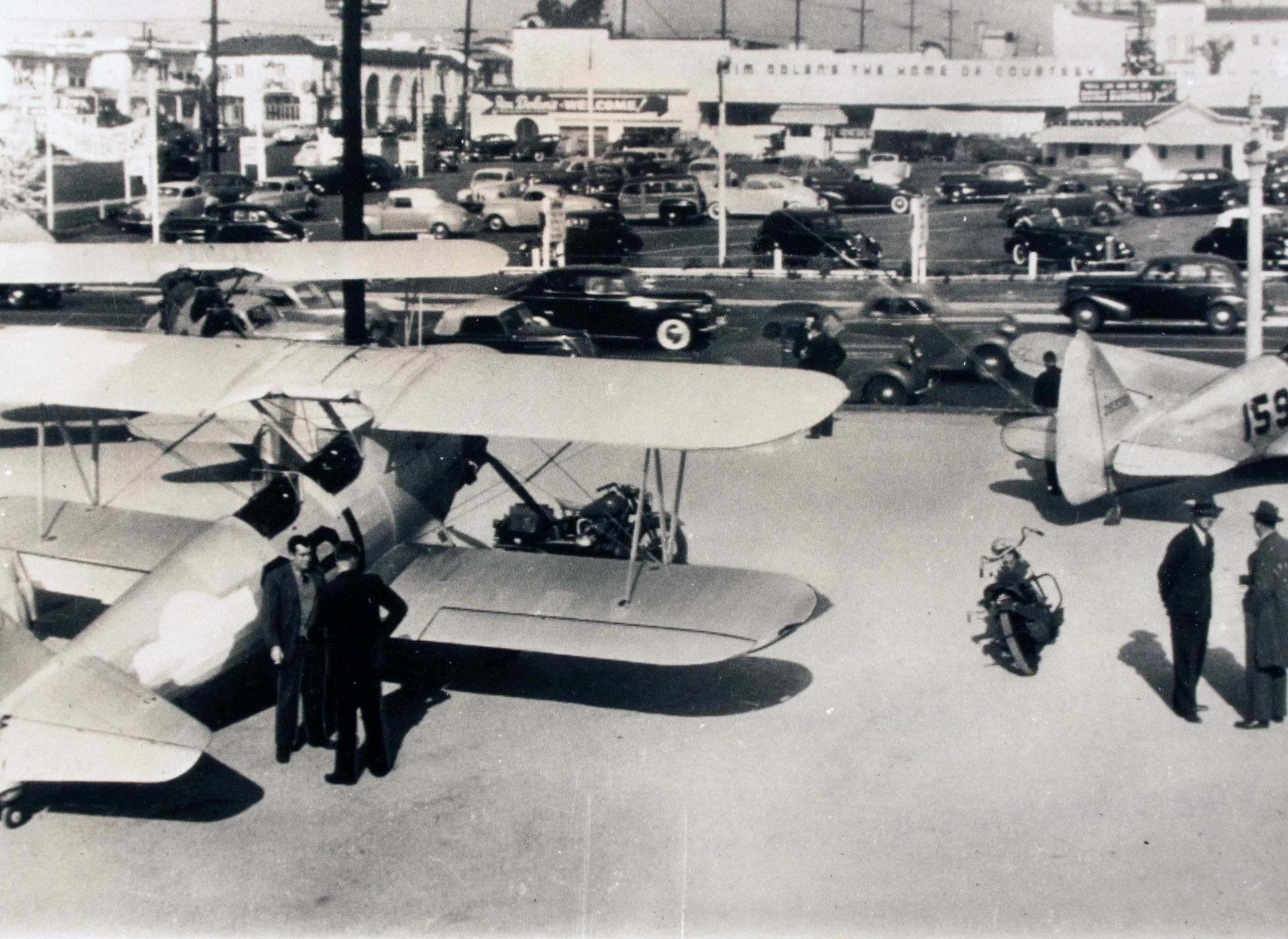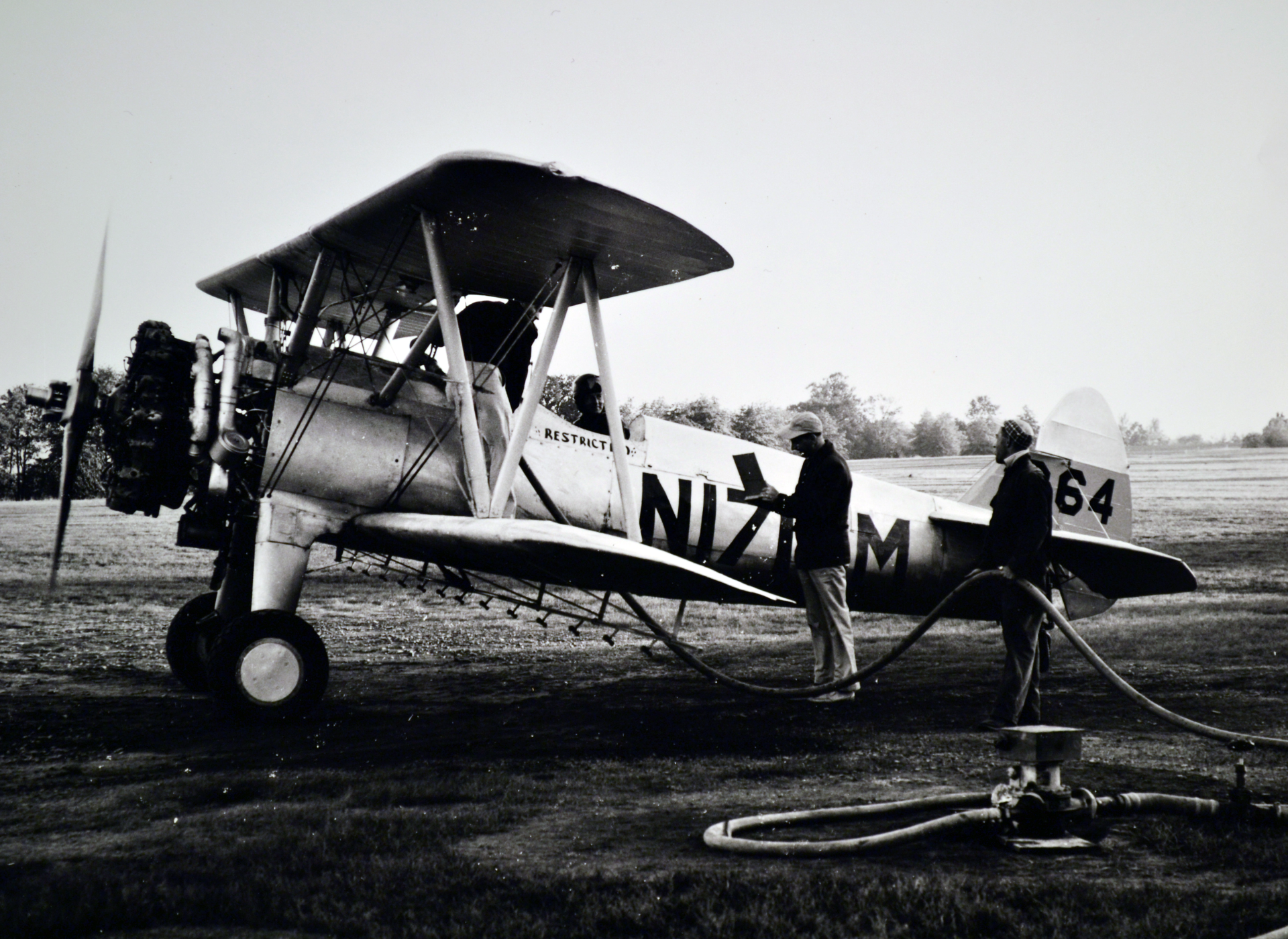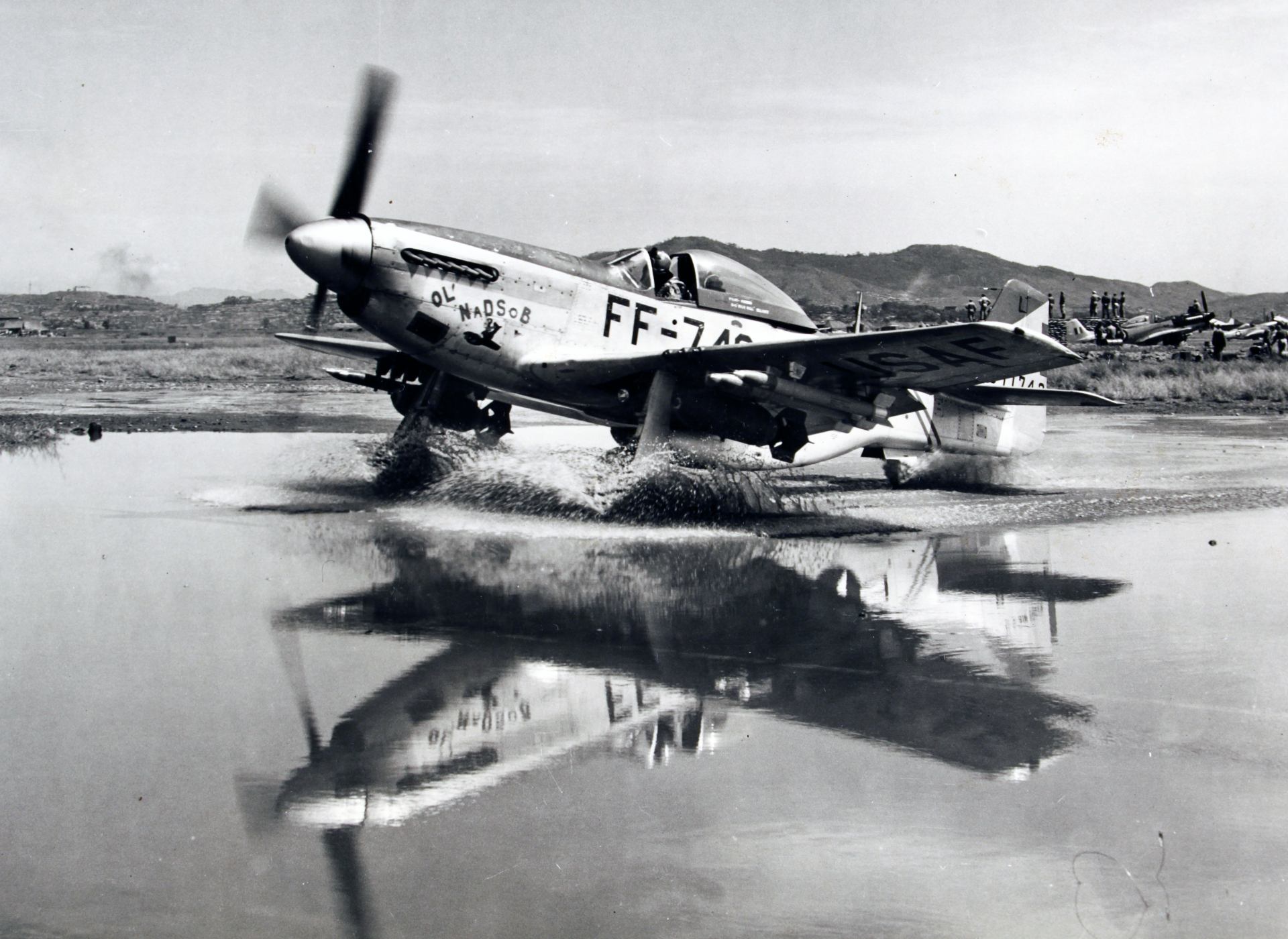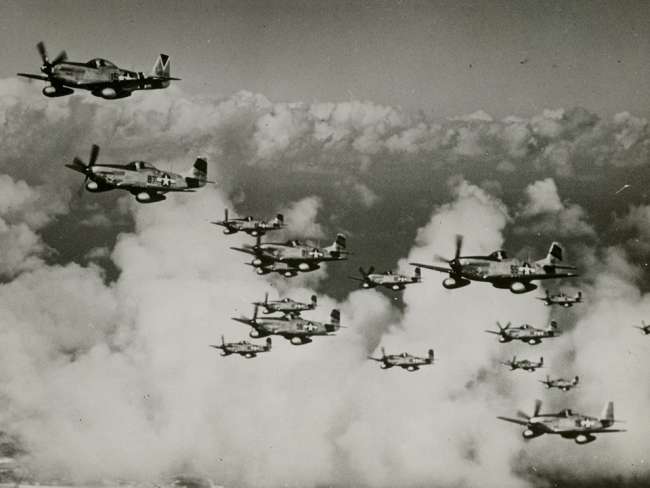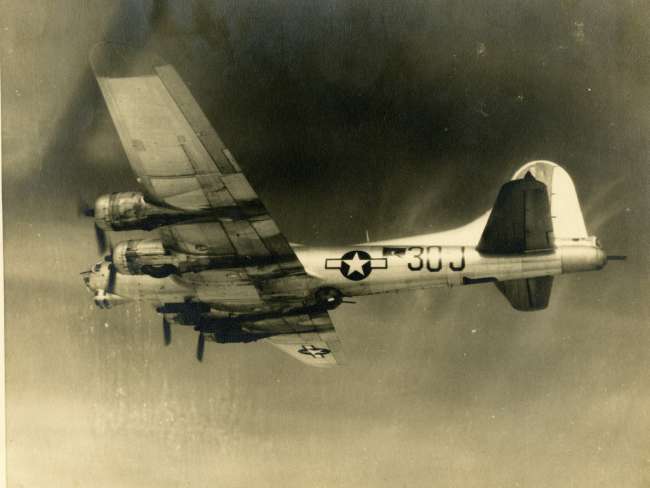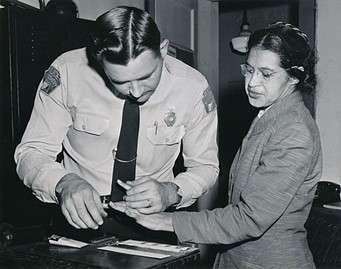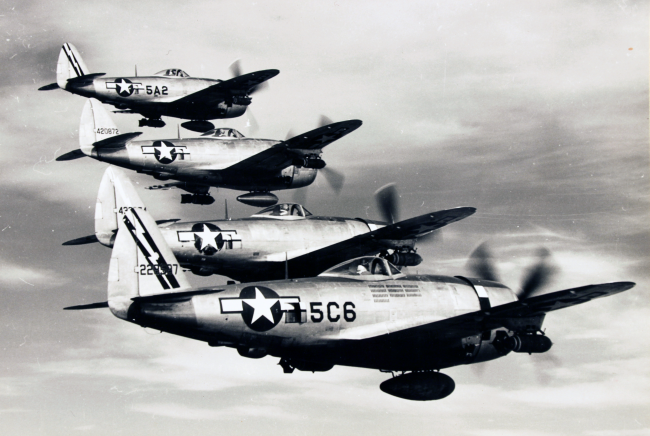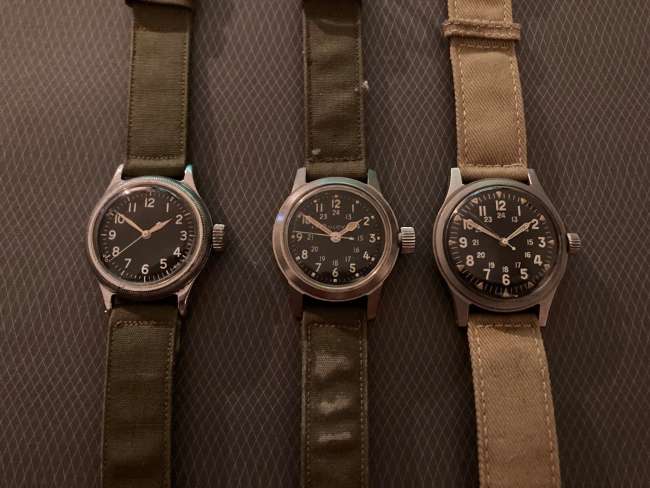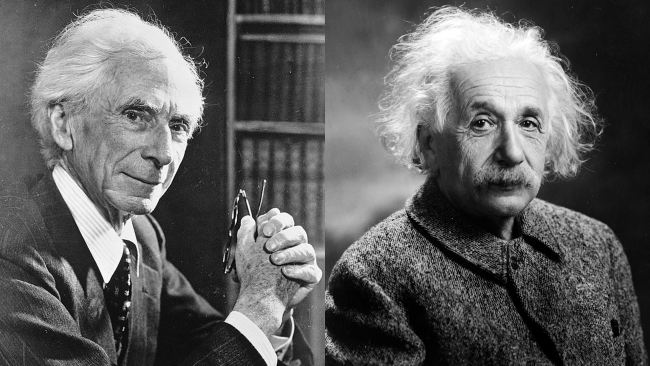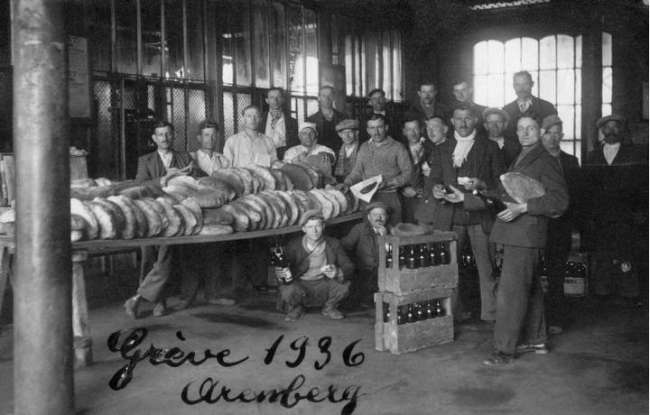Top Photo: At an airfield in Landsberg, Germany, a Martin B-26 Marauder named Heaven Can Wait meets its end when explosive charges blow the aircraft, formerly of the Army Air Force’s 344th Bombardment Group, into easily manageable pieces. The National Archives
In the winter of 1945, at a former Luftwaffe bomber base in Bavaria, scores of Martin B-26 Marauders met their end. After valuable components were stripped out of the medium bombers, men affixed TNT packs to the wing roots of these combat veterans and lit the fuses. In a thunderous crack and a shower of twisted metal, any hope of ever flying again was gone. After a few more well-placed explosive charges ripped through the remains, bulldozers raked up the shattered pieces and trucks hauled the fragments to the smelter. Seeing the photos is enough to make any World War II curator cry.
Over the course of the war, factories in the United States built nearly 300,000 military aircraft. About seven percent of them were lost in accidents stateside and 14 percent more in combat operations overseas. Roughly 230,000 aircraft remained, and the military needed only a fraction of them in the postwar world.
As a result, the US War Assets Administration and the Reconstruction Finance Corporation began to make the hard decisions to leave many aircraft behind. The Marauders were expendable. In the medium bomber competition between Martin B-26s and North American B-25s, the latter came out on top in almost every category. Though the B-26 Marauder was faster and could carry more payload, it was also much more dangerous and troublesome. B-25 Mitchells, on the other hand, were dependable, relatively easy to fly, and always versatile. Versions of the airplane were not only bombers, but also adapted to patrol duties, up-armed into gunships, converted to trainers, and were loaded with cameras to operate as recon planes. In the hard choices after the fighting ended, B-25s lived to fly another day and B-26s were executed on the spot.
The same “either/or” situation happened with attack planes. The Douglas A-20 Havoc was a great workhorse, but it was old and slow compared to Douglas’s next model attack aircraft, the A-26 Invader. Between the two, Invaders were clearly a more capable machine. They lived into the 1960s while A-20s often didn’t even return home.
-

Photographed around 1946, rows of Boeing B-17 bombers—some of them nearly brand new—await their fate at Kingman Army Air Field in Arizona. Credit: The National Archives
-

Robbed of their engines, Curtiss P-40 fighters are lined up vertically at Walnut Ridge, Arkansas, to maximize space. Most, if not all, of the aircraft in the photograph, met their end at the smelter. Credit: The National Archives
-

Deemed expendable, a Grumman F6F Hellcat takes to the skies without a pilot. Retired fighters-turned-remote-controlled drones were used up in gunnery training, testing atomic age antiaircraft missiles, and were briefly used as flying bombs in the 1950s. Credit: The National Archives
-

Next to an automotive dealership, an entrepreneur tries his hand at selling surplus airplanes. The two Stearman biplanes (left) have their national insignia blotted out with paint. The Ryan monoplane on the right was built in San Diego and flew at a stateside training base. Credit: The National Archives
-

Compared to a massive bomber or high-performance fighter, simple trainer aircraft had value in the postwar world. Here, a Stearman primary trainer takes on a job as a sturdy, stable, and relatively inexpensive crop duster. Credit: The National Archives
-

The last P-51D Mustang made by North American Aviation had a new life, and death, in Korea. The dented and dingy fighter, now designated F-51, is seen here lugging bombs and rockets through a puddle at an Asian airfield. The plane was lost due to ground fire in October 1951. Credit: The National Archives
A similar fate awaited many outmoded fighter planes. P-39 Airacobras, P-40 Warhawks, and F4F and FM-2 Wildcats were nearly worthless as far as the military was concerned—their day had passed. Lockheed P-38 Lightnings, too, fell out of favor as too big, expensive, and complex to survive in great numbers.
The winners of the dogfight between fighter types were Republic P-47 Thunderbolts and North American P-51 Mustangs. These two types soldiered on in occupation duties or filled the squadrons of Air National Guard units back home. Generally, P-51s flew in units west of the Mississippi River while P-47s, particularly later long-range models, flew in the East.
Even though certain types were earmarked for retention, there were still too many of them. Over the next decade, squadrons of them were given away or sold at rock-bottom prices to allies. As jets became more of a factor in military air forces, P-47s faded away while P-51 Mustangs continued to hold on in far greater numbers.
The bomber game was even more straightforward. Boeing B-29 Superfortress bombers were the new gold standard, and anything else was expendable. Many Boeing B-17s and Consolidated B-24s hovered on the edge of usefulness while an invasion of Japan seemed to be in the cards, but after the end of the fighting, it was a no-brainer to make endless acres of parked heavy bombers disappear.
When movie pilot Paul Mantz bought 475 surplus bombers and fighters for $55,000, nearly everyone told him he was crazy. He used to joke that he briefly owned the world’s seventh-largest air force, bigger than China’s.
After he’d drained the fuel from the aircraft and sold the gas for more than the purchase price, even doubters began to see a method to his madness. Mantz proceeded to market many engines as spares, get a pretty penny per pound for scrap Plexiglas, and then negotiated a deal to peddle oxygen regulators back to the government for $75 each. Finally, he worked a deal for most of the aircraft to go to a metal scrapper for $160,000, but not before selecting 12 aircraft to keep. He used a couple B-25 bombers converted into camera ships to film Cinerama footage for Disney. And he personally raced a pair of P-51s that he’d rescued from the scrap pile.
What was never on the scrap heap was cargo planes. They were a valuable tool that could still be used by the military, were snapped up by airlines bouncing back after the war, or began new lives with small air cargo outfits in Asia, Africa, South America, and Alaska. Douglas C-47s and C-54s were as good as gold for decades.
Trainers were similarly useful. They were, as a rule, smaller and simpler than a B-17 or P-38, making them useful for beginning pilots, pleasure flyers, and agricultural work. Many Stearman PT-17 biplanes went into service with crop dusters or air show performers. The availability of surplus machines allowed all sorts of fliers to take to the skies at a bargain price.
Back in the world of high-performance planes that no civilian (yet) wanted, the Navy had to make an “either/or” decision when it came to Grumman Hellcats and Vought Corsairs. Only one would make it into the postwar world in great numbers. While Hellcats were easier to fly and endlessly tough and dependable, Corsairs could cruise faster and farther and could haul more weaponry. Plus, the Grumman Aircraft Engineering Corporation was sitting pretty, positioned to build Tigercats and Bearcats as well as the early generations of jets. Vought, meanwhile, was available to continue to build Corsairs and spares. As a result, many Hellcats were used up as drones—shot for the skies in training.
When war broke out in Korea, the new jet aircraft being used by the Air Force and Navy had shortcomings. They were expensive and delicate, unable to operate from makeshift runways or loiter over the battlefield for hours at a time. Thousands of Corsairs and Mustangs (now designated F-51s) served in Korea as “bomb trucks,” forever hauling explosives to the front lines. Bought and paid for as far as the military was concerned, they could be used up flying dirty and dangerous missions the jet jockeys wouldn’t touch. Masses of B-29s served in Korea, bombing by day until MiG-15 jet fighters began to ravage them. The Superfortress crews quickly transferred their operations almost solely to nighttime bombing.
Today we see the results of the government decisions at the end of World War II in the museum and warbird communities. A number of “useful” aircraft, like F4U Corsairs and B-25 Mitchells, survived to reside in collections and can be seen at places like The National WWII Museum. By contrast, purged planes like B-26 Marauders and A-20 Havocs are exceedingly rare. For aircraft like Republic P-47s, of which more than 15,600 examples were built, only a quarter of one percent survive today.
That’s not to say any WWII-era aircraft survived in abundance. North American P-51 Mustangs, perhaps the most sought after and coveted fighters for warbird fliers and museums for decades, are still scarce. If anyone was going to bother to save a warbird, it was usually a Mustang. Of the 15,000 P-51s constructed during the war, only about two percent endure in the 21st century.
A few still fly, while others reside in institutions like The National WWII Museum. Despite their few numbers, they are a last legacy to the Americans who designed, built, flew, and maintained these aircraft. They are, and will remain, a lasting legacy of our nation’s collective history.
